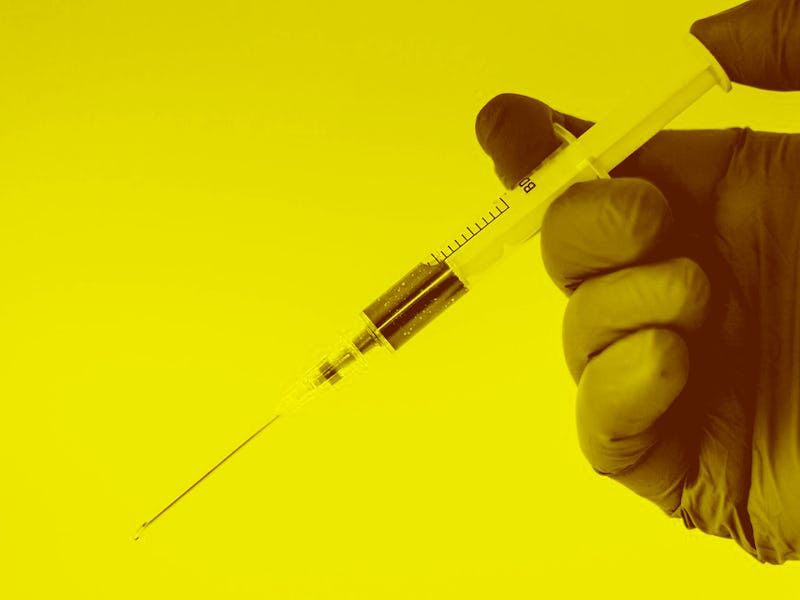Flu Shots Kick Off a Physiological Arms Race
If you're going to get one, you might as well know what it's doing.

Each year, as trees shed the last of their trappings, so too do humans shed their ability to fight off the flu. The autumn leaves us immunologically naked, begrudgingly ready to begin the annual trudge to the doctor’s office anew. Our resentment is understandable but not unwarranted: The informally mandatory yearly injection is epidemiology’s way of arming us against the fresh hell a new winter may bring. Every year, we wage a new war.
We don’t use a particularly efficient strategy to fight our battles, but it’s the best we can do. The CDC admits that the yearly flu vaccine is, at most, 50 to 60 percent effective in reducing the risk of catching the flu in the general population. Still, it’s better than nothing: The influenza virus, which in 1918 killed between 20 and 40 million people in one fell swoop, is thought to have killed somewhere between 3,000 to 50,000 people between 1976 and 2007 — mostly old folks. The yearly vaccine offers the peace of mind of knowing that we’ve at least got defenses set up against the flu’s most predictable plan of attack.
Like one unexpectedly popular brand of fruity seltzer, the flu virus continually releases new flavors, most of which we can’t predict. At the very least, these viral strains can be grouped into three broad categories: two influenza A (H1N1 and H3N2) viruses and an influenza B virus. The “trivalent” vaccine that most of us get when we go to the doctor’s builds up immunity against these three strains (“quadrivalent” ones are also available). After that, the best we can do is hope that the strain of the year is similar to the ones we’re protected against.
Up close and personal with the influenza virus.
Scientists spend the warm months bookending the winter researching the strain that’s most likely to infect the nation, isolating it and creating a vaccine from its parts. What a vaccine essentially is is a taunt — a shell of a once-dangerous virus, dangled in front of our immune systems like a boot to a bloodhound. We want our immune cells — the white blood cells, the body’s infantry — to know their enemy before it arrives. That way, it can get riled up and stockpile an arsenal of virus-targeted antibodies before the actual enemy even makes contact.
Normally, the virus is grown inside eggs, deactivated, and occasionally mixed with immune system-irritating compounds known as “adjuvants” to make the vaccine. When molecules of the deactivated virus are pumped into your bloodstream, your white blood cells find them and quickly learn how to create the antibodies it needs to fight them. It’s not an entirely painless process — pestering the immune system always stirs up a bit of inflammation, hence mild soreness and fever at the time of the flu shot — but once it learns, it never forgets.
Armed and ready, there’s nothing left for the body to do but wait for the attack. If the scientists correctly predict the flu virus du jour, the vaccinated among us will have a volley of antibodies to deploy when the flu invades, which will effectively neutralize and kill the virus particles before they can wreak havoc.
What if the scientists get it wrong? In that case, whether or not you’re vaccinated, your body’s pretty much on its own: That novel flu virus, to your immune system, is simply another strange new enemy to attack and destroy. Unfortunately, the ill-prepared army tends to go into a state of panic, resulting in the clusterfuck of mucosal inflammation and cell death that manifest as the (occasionally fatal) fever, chills, aches, and sweating associated with the flu.
The flu shot has a huge margin of error, but getting it is so low-stakes — what’s a bit of soreness compared to literally risking death? — that it’s irresponsible not to get it if it’s available. Besides, the flu shot — like all vaccines — isn’t just about you; it’s about not spreading it to everyone you come into contact with. The winter months are hard enough — let’s not make them any harder.